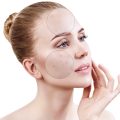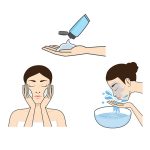1. Understanding the Causes of Hair Loss in the U.S.
Before we compare the most cost-effective hair loss treatments, it’s important to understand why hair loss happens in the first place. Many Americans experience hair thinning or balding at some point in their lives, and there are several common causes behind this issue. Here’s a brief overview of the main types and reasons for hair loss among people living in the United States:
Common Types of Hair Loss
| Type of Hair Loss | Description |
|---|---|
| Androgenetic Alopecia | Also known as male or female pattern baldness; most common type caused by genetics. |
| Alopecia Areata | An autoimmune disorder where the immune system attacks hair follicles, leading to patches of hair loss. |
| Telogen Effluvium | Temporary hair shedding often triggered by stress, illness, or hormonal changes. |
| Traction Alopecia | Hair loss caused by hairstyles that pull tightly on the scalp (like braids or ponytails). |
Main Causes of Hair Loss Among Americans
- Genetic Factors: Family history plays a big role, especially with androgenetic alopecia.
- Hormonal Changes: Shifts due to pregnancy, menopause, thyroid problems, or aging can impact hair growth cycles.
- Lifestyle Choices: Poor diet, high stress levels, lack of sleep, and certain hair care habits (such as frequent heat styling) may contribute to thinning hair.
- Environmental Influences: Exposure to pollution, harsh chemicals, and even changing seasons can weaken hair over time.
Why Does This Matter?
The reason behind your hair loss can affect which treatment will work best for you. That’s why understanding these causes is a crucial first step before exploring affordable solutions that actually fit your needs.
2. Over-the-Counter Solutions: Efficacy and Affordability
Minoxidil (Rogaine): Americas Go-To Hair Regrowth Aid
Minoxidil, best known by the brand name Rogaine, is one of the most popular over-the-counter hair loss treatments in the U.S. It’s available at major drugstores like Walgreens, CVS, and Walmart without a prescription. Minoxidil comes in foam or liquid form and is applied directly to the scalp.
How Effective Is Minoxidil?
Many users report noticeable results after several months of consistent use, especially for hereditary hair loss (androgenetic alopecia). While it doesnt work for everyone, clinical studies show that about 40% of men experience moderate to dense hair regrowth after using minoxidil for 3–6 months.
Cost and Accessibility
Minoxidil is easy to find and relatively affordable compared to prescription treatments or professional procedures. Generic versions are widely available, helping keep costs down.
| Product | Average Monthly Cost | Where to Buy |
|---|---|---|
| Minoxidil (Rogaine) | $20–$40 | CVS, Walgreens, Walmart, Amazon |
| Generic Minoxidil | $10–$25 | CVS, Walgreens, Walmart, Amazon |
Biotin Supplements: Are They Worth It?
Biotin, a B-vitamin, is often marketed as a solution for stronger hair and nails. Biotin gummies and capsules are everywhere—from Target to GNC—and have become a staple in many Americans’ routines.
Efficacy: What Does Science Say?
While biotin deficiency can cause hair thinning, most people in the U.S. get enough through their diets. Studies suggest that unless you’re actually deficient in biotin, taking extra may not make a big difference for hair regrowth. However, many users believe it improves overall hair health and shine.
Cost and Accessibility
| Product | Average Monthly Cost | Where to Buy |
|---|---|---|
| Biotin Gummies/Tablets | $8–$20 | Target, GNC, CVS, Walgreens, Walmart |
Which OTC Option Fits Your Budget?
If you’re looking for an easy-to-find and affordable treatment for hair loss, both minoxidil and biotin supplements are good places to start. Minoxidil has stronger scientific backing for regrowing hair on the scalp, while biotin may support general hair health if you’re lacking it in your diet. Both options are easily accessible at most U.S. drugstores and online retailers.
![]()
3. Prescription Treatments: Results Versus Price
Understanding Prescription Hair Loss Treatments in the U.S.
When it comes to treating hair loss, prescription medications are among the most effective options available. In the United States, the most common prescription treatment is finasteride (brand name Propecia), but some healthcare providers also offer combination therapies that may include oral minoxidil, dutasteride, or topical solutions compounded with other ingredients. Choosing the right treatment often depends on balancing effectiveness, cost, and insurance coverage.
Comparing Common Prescription Options
| Treatment | How It Works | Typical Monthly Cost (Out-of-Pocket) | Potential Insurance Coverage | Main Side Effects |
|---|---|---|---|---|
| Finasteride (Propecia) | Blocks hormone (DHT) that causes hair loss | $20–$80 | Rarely covered for cosmetic use | Low libido, erectile dysfunction, breast tenderness |
| Oral Minoxidil (Off-label) | Increases blood flow to hair follicles | $10–$40 | Not typically covered | Swelling, heart palpitations, dizziness |
| Dutasteride (Off-label) | Blocks DHT more strongly than finasteride | $30–$90 | Seldom covered for hair loss | Similar to finasteride, possibly more pronounced |
| Combination Therapies (custom compounds) | Mix of oral/topical meds tailored to patient needs | $50–$150+ | Rarely covered; mostly cash-pay at specialty pharmacies | Varies by ingredients used |
Insurance Coverage and Out-of-Pocket Expenses
Most U.S. health insurance plans do not cover prescription medications for hair loss when used for cosmetic reasons. This means patients usually pay out-of-pocket unless the drug is prescribed for another approved medical condition. Generic forms of finasteride and minoxidil can be relatively affordable, but brand-name products and custom compound therapies may become expensive over time.
Key Takeaways for Cost-Conscious Consumers:
- Ask about generics: Generic finasteride is just as effective as the brand name and much less expensive.
- Shop around: Prices can vary widely between pharmacies—consider using discount programs or online mail-order options.
- Consult your doctor: Some providers offer combination therapies tailored to your specific needs, which may provide better results if single treatments don’t work well.
- Factor in long-term costs: These treatments only work while you’re taking them, so consider what’s sustainable for your budget over months or years.
4. In-Clinic Procedures: Value for Money
When it comes to treating hair loss, many people consider in-clinic procedures because they are managed by professionals and offer advanced technology. Let’s break down three of the most popular clinically-administered options in the United States—PRP (Platelet-Rich Plasma), low-level laser therapy (LLLT), and hair transplants—to see how they stack up in terms of cost and results.
Comparing Popular In-Clinic Hair Loss Treatments
| Treatment | Upfront Cost (Average) | How It Works | Expected Results | Long-Term Value |
|---|---|---|---|---|
| PRP Therapy | $1,500–$3,500 (for 3 sessions) | Uses your own blood’s plasma to stimulate hair growth through injections. | Noticeable improvement for some within 3–6 months; maintenance needed. | Good for early hair loss; ongoing sessions increase cost. |
| Low-Level Laser Therapy (LLLT) | $1,000–$3,000 (device or clinic sessions) | Uses laser light to encourage hair follicles to grow stronger hair. | Gradual thickening over several months; works best with consistent use. | Non-invasive; at-home devices save money long-term. |
| Hair Transplant | $6,000–$15,000 (one-time procedure) | Moves healthy hair follicles from one part of your scalp to thinning areas. | Permanent new growth in transplanted areas within 6–12 months. | High upfront cost but can be a lifelong solution. |
What to Consider Before Choosing an In-Clinic Treatment
- Your Budget: Some treatments have lower starting costs but require ongoing sessions, while others have a higher one-time price tag but may not need future touch-ups.
- Your Goals: Are you looking for gradual improvement or a permanent fix? PRP and LLLT are great for early-stage hair loss, while transplants are best for significant thinning.
- Lifestyle: Consider how much time you can dedicate to treatments—some require multiple visits, others just one procedure.
- Medical Advice: Always consult with a board-certified dermatologist or hair restoration specialist before making a decision.
The Bottom Line on Value for Money
If you’re looking for the most cost-effective option, think about both short-term expenses and what will work best for your specific situation over time. Many Americans find that investing in professional procedures gives peace of mind and better outcomes, especially when combined with expert care and follow-up support from their clinic.
5. Lifestyle Changes and Natural Remedies
When it comes to hair loss, many Americans turn to affordable lifestyle changes and natural remedies before trying pricier medical treatments. Let’s explore which low-cost strategies are most popular in the U.S., how they work, and what science says about their real impact on hair health.
Diet Modifications
Adjusting your diet is one of the simplest ways people try to support healthy hair growth. Eating a balanced diet rich in protein, iron, zinc, and vitamins (especially biotin, vitamin D, and vitamin E) may help reduce hair thinning. Here’s a quick look at key nutrients:
| Nutrient | Food Sources | Potential Impact on Hair |
|---|---|---|
| Protein | Eggs, chicken, beans | Strengthens hair structure |
| Iron | Spinach, red meat, lentils | Supports hair follicle health |
| Zinc | Pumpkin seeds, beef, chickpeas | Aids scalp repair and growth |
| Biotin (Vitamin B7) | Nuts, eggs, sweet potatoes | Improves hair strength and thickness |
| Vitamin D | Fatty fish, fortified milk, sunlight exposure | May stimulate new follicles |
| Vitamin E | Almonds, spinach, avocados | Protects against oxidative stress |
Stress Management Techniques
High stress is a well-known trigger for hair loss. American culture embraces several cost-free or low-cost ways to manage daily stress:
- Meditation & Mindfulness: Regular practice can help lower stress hormones linked to hair shedding.
- Exercise: Activities like jogging, yoga, or even walking can boost overall well-being and potentially improve scalp circulation.
- Therapy & Support Groups: Free or low-fee community resources can offer emotional support during tough times.
- Adequate Sleep: Prioritizing 7-8 hours per night helps regulate body functions that influence hair growth.
Home-Based Remedies Popular in the U.S.
The following home remedies are commonly tried by Americans hoping to slow down hair loss without spending much money:
| Remedy | Description & Use | Scientific Support? |
|---|---|---|
| Coconut Oil Scalp Massage | Massing coconut oil into the scalp to moisturize and possibly strengthen hair shafts. | Some evidence for moisturizing; limited proof for regrowth. |
| Aloe Vera Gel Application | Smoothing pure aloe vera gel on the scalp to reduce irritation and dandruff. | Mild benefit for scalp health; minimal effect on regrowth. |
| Essential Oils (like rosemary or peppermint) | Diluted oils massaged into the scalp aiming to boost circulation. | Anecdotal support; limited clinical evidence. |
| Avoiding Harsh Chemicals & Heat Styling | Letting hair air dry and choosing gentle shampoos/conditioners. | Evident benefit for reducing breakage and dryness. |
The Real Impact: What to Expect?
Lifestyle changes and natural remedies are generally safe and inexpensive. However, while improving nutrition and lowering stress can contribute to better overall hair health, these strategies alone rarely reverse significant genetic or medical hair loss. For mild cases or as part of a broader routine, they can help maintain healthy-looking hair without breaking the bank. Most importantly: results vary from person to person—what works for one might not work for another.


